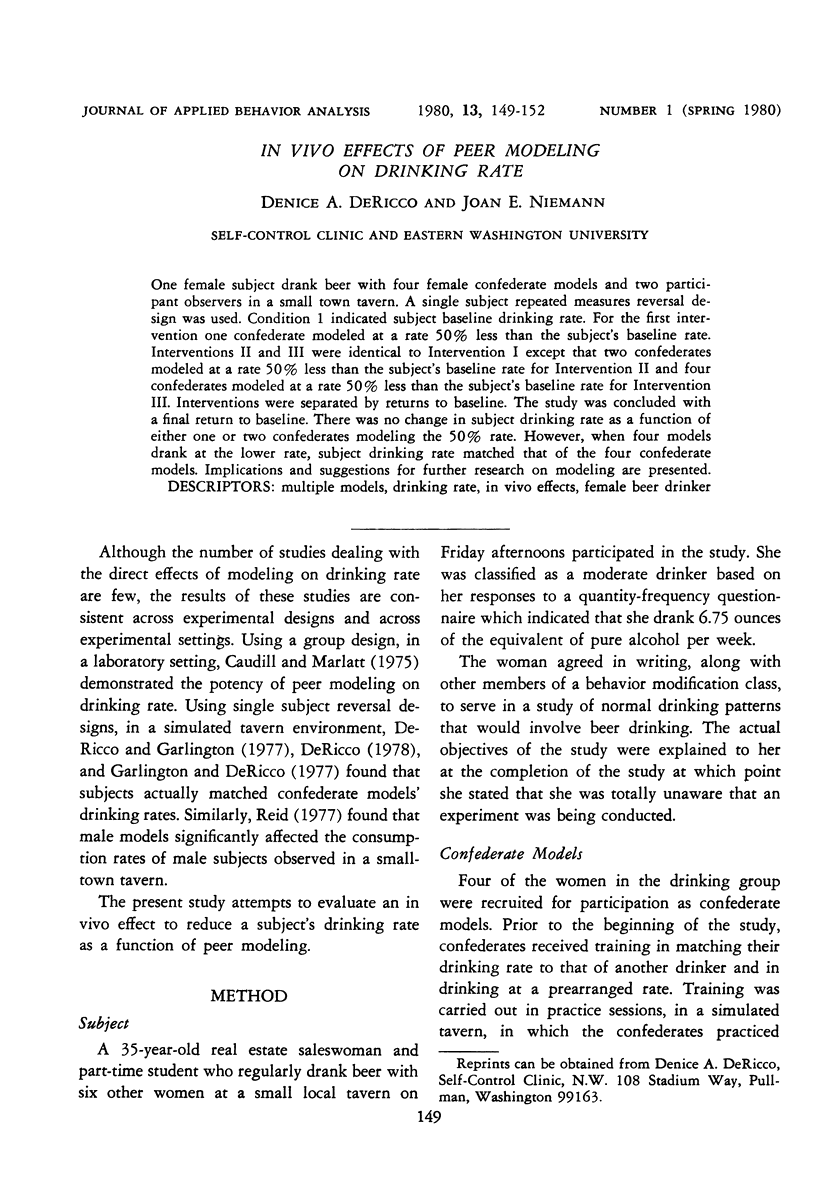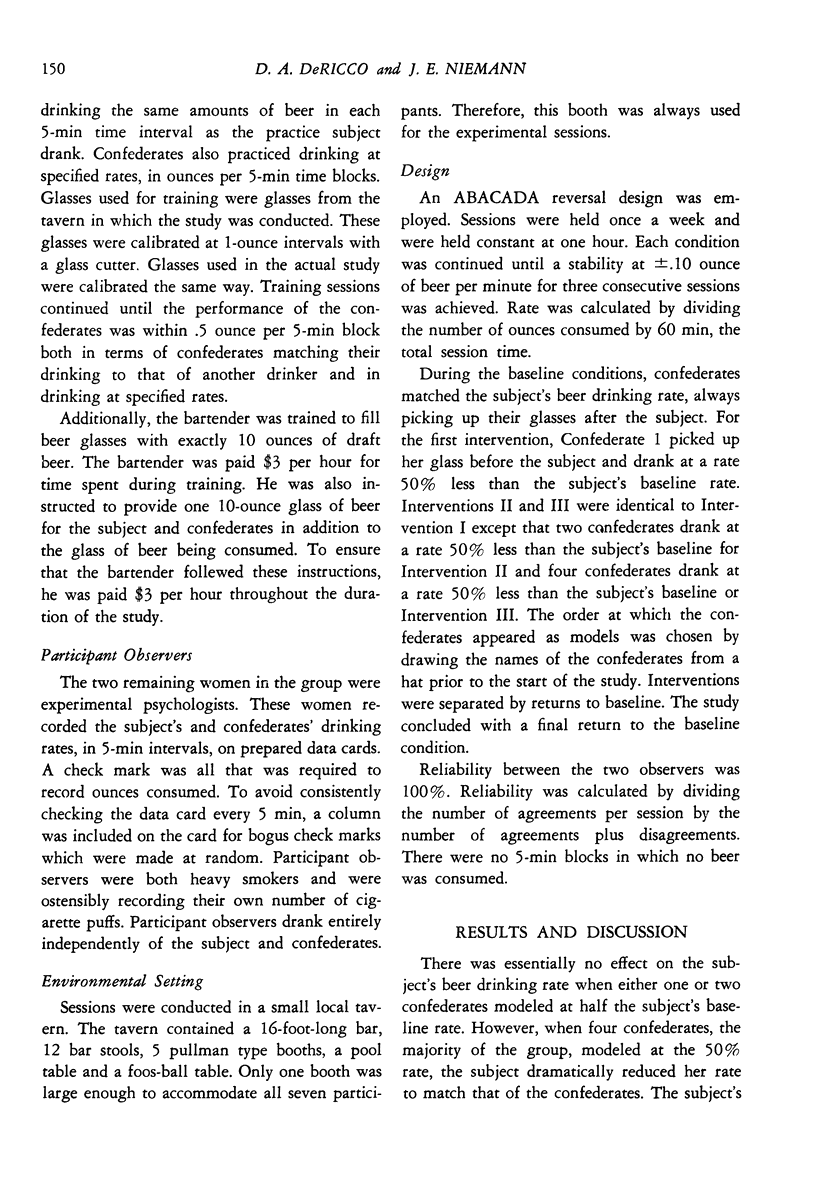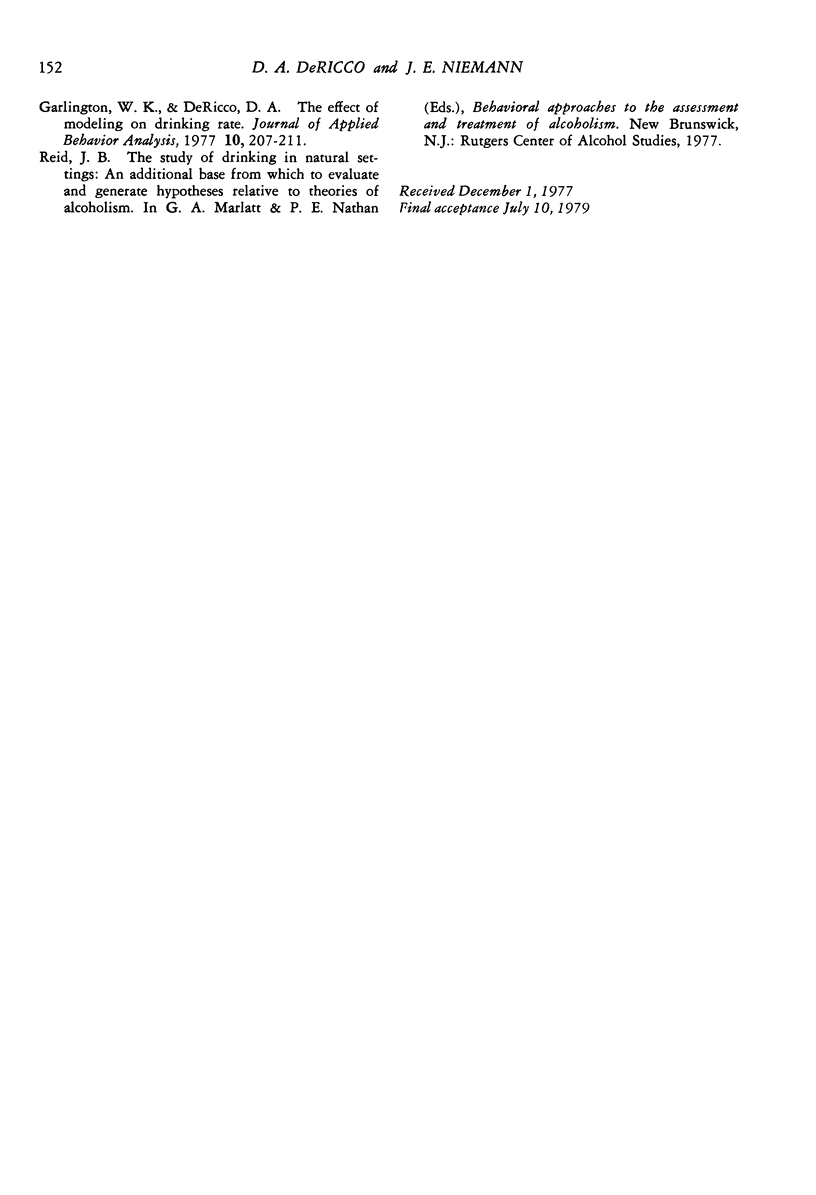Abstract
One female subject drank beer with four female confederate models and two participant observers in a small town tavern. A single subject repeated measures reversal design was used. Condition 1 indicated subject baseline drinking rate. For the first intervention one confederate modeled at a rate 50% less than the subject's baseline rate. Interventions II and III were identical to Intervention I except that two confederates modeled at a rate 50% less than the subject's baseline rate for Intervention II and four confederates modeled at a rate 50% less than the subject's baseline rate for Intervention III. Interventions were separated by returns to baseline. The study was concluded with a final return to baseline. There was no change in subject drinking rate as a function of either one or two confederates modeling the 50% rate. However, when four models drank at the lower rate, subject drinking rate matched that of the four confederate models. Implications and suggestions for further research on modeling are presented.
Full text
PDF



Selected References
These references are in PubMed. This may not be the complete list of references from this article.
- Caudill B. D., Marlatt G. A. Modeling influences in social drinking: an experimental analogue. J Consult Clin Psychol. 1975 Jun;43(3):405–415. doi: 10.1037/h0076689. [DOI] [PubMed] [Google Scholar]
- DeRicco D. A. Effects of peer majority on drinking rate. Addict Behav. 1978;3(1):29–34. doi: 10.1016/0306-4603(78)90007-2. [DOI] [PubMed] [Google Scholar]
- Dericco D. A., Garlington W. K. The effect of modeling and disclosure of experimenter's intent on drinking rate of college students. Addict Behav. 1977;2(2-3):135–139. doi: 10.1016/0306-4603(77)90031-4. [DOI] [PubMed] [Google Scholar]
- Garlington W. K., Dericco D. A. The effect of modelling on drinking rate. J Appl Behav Anal. 1977 Summer;10(2):207–211. doi: 10.1901/jaba.1977.10-207. [DOI] [PMC free article] [PubMed] [Google Scholar]


